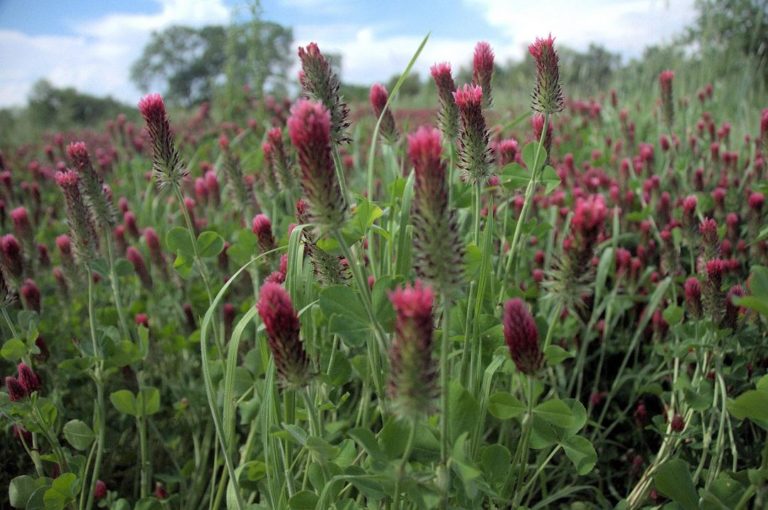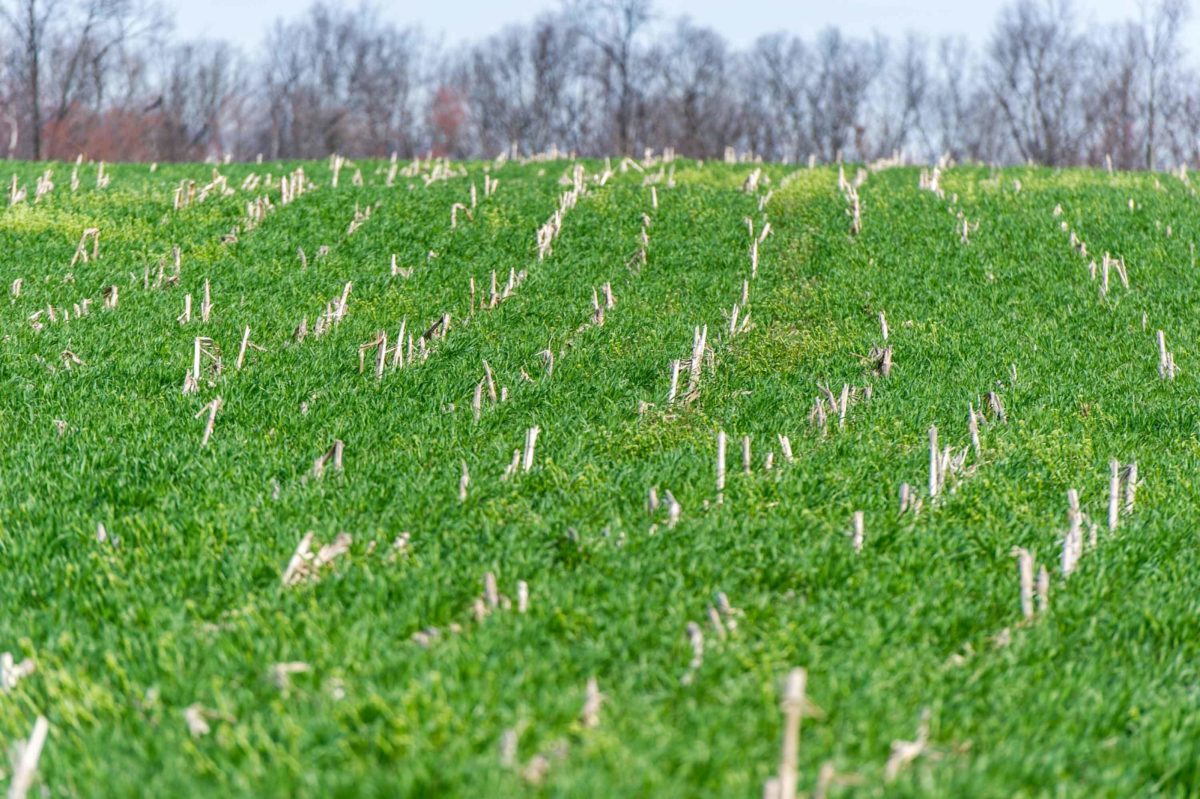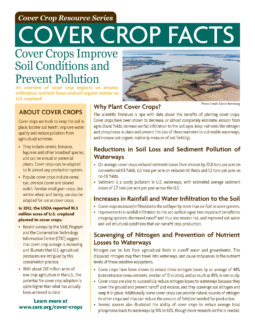An overview of cover crop impacts on soil losses from agricultural production systems.1

Download this fact sheet (PDF). This fact sheet is part of the Ecosystem Services from Cover Crops fact sheet series.
Cover Crops and Erosion
Cover crops can successfully decrease, or almost completely eliminate, soil loss from various production systems. They do this by:
- Providing coverage of the soil surface and protecting it from rain and wind
- Rooting into the soil profile and improving soil structure
- Encouraging water infiltration to the soil profile
Studies have shown decreases in soil loss from fields planted into different types of cover crops.
- Non-legume cover crops, including rye, ryegrass, triticale, barley, and wheat, reduced soil loss by 31% to 100% as compared to fields in which no cover crops were grown.
- Legume cover crops, including red clover, crimson clover, lentil and pea, reduced soil loss by 38% to 69% as compared to no cover crops.
- Mustard, a brassica, reduced soil loss by up to 82% as compared to no cover crop.
- On average, cover crops reduced sediment losses from erosion by 20.8 tons per acre on conventional-till fields, 6.5 tons per acre on reduced-till fields and 1.2 tons per acre on no-till fields.
Management Decisions Matter
- The best management practices for preventing soil loss are those that maximize ground coverage year-round, and these include no-till management in combination with cover crop growth.
- Conservation tillage practices were responsible for an 89% reduction in soil loss as compared to conventional tillage.
Cover Crops Can Steward Water Quality and Soil Health
- Erosion is a costly depletion of resources, a displacement of soil from where it is needed to where it becomes a pollutant in waterways. Displaced soil can carry nutrients, like nitrogen and phosphorus, which further pollute waterways.
- We can invest in reduced rates of soil loss from agricultural fields, whether in vineyard rows or corn fields, by planting cover crops, maintaining constant ground cover and utilizing no-till management.
About Cover Crops

Cover crops are tools to keep the soil in place, bolster soil health, improve water quality and reduce pollution from agricultural activities.
- They include cereals, brassicas, legumes and other broadleaf species, and can be annual or perennial plants. Cover crops can be adapted to fit almost any production system.
- Popular cover crops include cereal rye, crimson clover and oilseed radish. Familiar small grain crops, like winter wheat and barley, can also be adapted for use as cover crops.
1 Unless otherwise cited, all data comes from a bibliography compiled by SARE and the University of Missouri.
